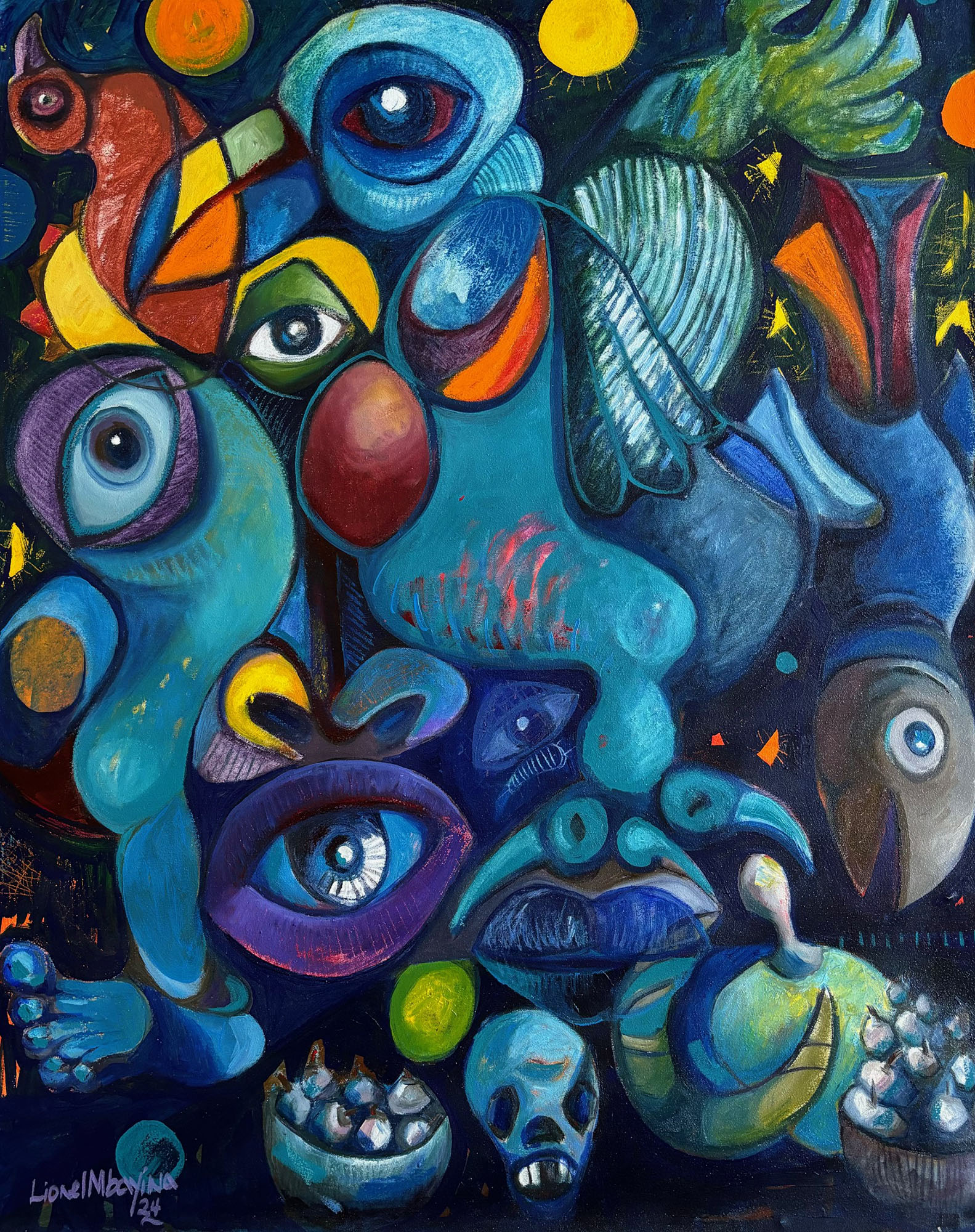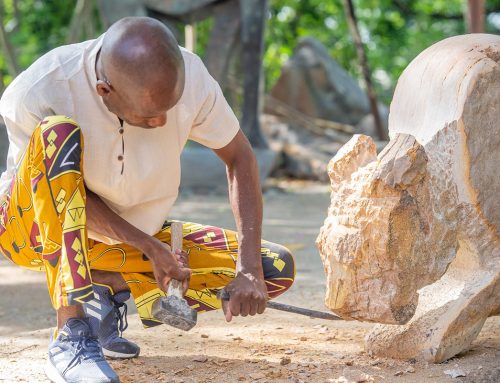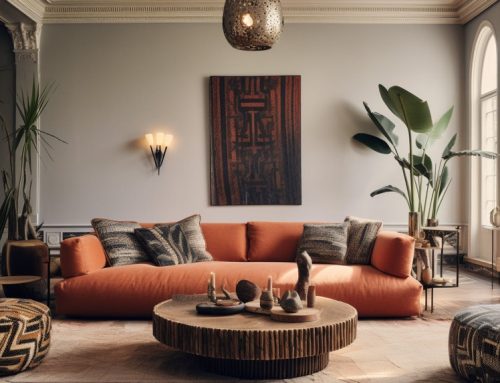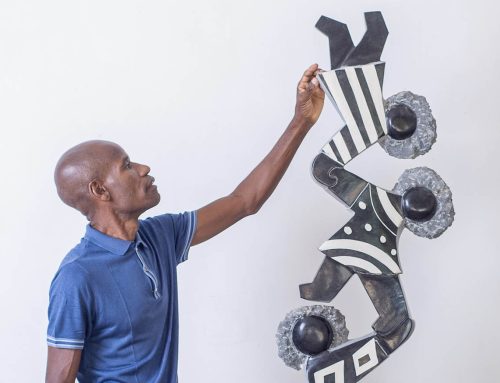
The Current State of Contemporary Art in Zimbabwe
Zimbabwe’s art scene is a rich tapestry of cultural expression, political commentary, and innovative creativity, steeped in a history of resilience and resistance. Despite economic challenges and political instability, contemporary art in Zimbabwe has continued to thrive, with artists using their work as a powerful tool for social change and identity exploration. The current state of Zimbabwean art is a dynamic reflection of the country’s complex socio-political landscape, blending traditional influences with modern techniques and themes.
Historical Context
To understand the contemporary art scene in Zimbabwe, it’s essential to consider the historical context. Zimbabwe has a long tradition of artistic expression, particularly in sculpture, which dates back to the ancient Shona civilization. The Shona people are renowned for their stone sculptures, often made from serpentine, which depict spiritual and ancestral themes. This tradition has carried into the modern era, with the country producing internationally acclaimed sculptors such as Nicholas Mukomberanwa and Dominic Benhura.
During the colonial period, Zimbabwean art was heavily influenced by Western styles and themes, often at the expense of indigenous artistic traditions. However, the post-independence era saw a resurgence of interest in African identity and heritage, with artists increasingly drawing on traditional motifs and narratives. This period also marked the beginning of a more critical and politically engaged art movement, as artists began to use their work to comment on the challenges facing the newly independent nation.
The Role of Sculpture
Sculpture remains a dominant force in Zimbabwean contemporary art. The country’s stone sculptors continue to be recognized on the international stage, and their works are often seen as emblematic of Zimbabwean culture. The Shona sculpture movement, which gained prominence in the mid-20th century, is particularly notable for its unique style that combines abstract and figurative forms. Artists like Dominic Benhura have pushed the boundaries of this tradition, incorporating more dynamic and expressive forms that resonate with contemporary audiences.
While Shona sculpture remains a significant aspect of Zimbabwean art, there has been a noticeable shift towards more experimental and mixed-media approaches. Contemporary sculptors are increasingly incorporating materials such as metal, wood, and found objects into their work, reflecting a broader trend towards innovation and diversification in Zimbabwean art.
Painting and Mixed Media
In recent years, painting and mixed media have emerged as significant mediums in Zimbabwe’s contemporary art scene. Artists are increasingly exploring themes related to identity, memory, and social justice, often using bold colors and abstract forms to convey complex narratives. One of the most prominent figures in this field is Lionel Mbayiwa, whose works are characterized by their vibrant colors and surreal, dreamlike quality. Mbayiwa’s paintings often tackle themes of trauma and healing, reflecting the broader socio-political challenges faced by Zimbabwe.
Another notable artist is Portia Zvavahera, who has gained international recognition for her deeply personal and emotive works. Zvavahera’s paintings, which often feature haunting, semi-abstract figures, explore themes of love, spirituality, and the female experience. Her work is a powerful commentary on the intersection of personal and collective identity in contemporary Zimbabwean society.
Mixed media artists like Julio Rizhi are also pushing the boundaries of traditional art forms. Rizhi is known for his intricate, textured works that combine painting, sculpture, and recycled objects. His art often addresses issues of power, inequality, and social change, reflecting the complex realities of life in Zimbabwe today.
Street Art and Urban Expression
Street art has become an increasingly visible and influential aspect of Zimbabwe’s contemporary art scene. In cities like Harare and Bulawayo, murals and graffiti are transforming urban spaces into vibrant canvases that reflect the voices and concerns of ordinary Zimbabweans. This form of art is often highly political, addressing issues such as corruption, poverty, and human rights abuses.
One of the leading figures in Zimbabwean street art is the collective “Dead BB”, which uses graffiti to challenge the status quo and provoke public debate. Their work is characterized by bold, provocative imagery and slogans that speak to the frustrations and aspirations of Zimbabwe’s youth. Street art in Zimbabwe is not just a form of resistance; it is also a way for artists to reclaim public spaces and make art accessible to a broader audience.
The Influence of Diaspora
The Zimbabwean diaspora has played a significant role in shaping the country’s contemporary art scene. Many artists have left Zimbabwe due to political and economic instability, but they continue to engage with their homeland through their work. The diaspora has facilitated the exchange of ideas and influences, leading to a more globalized and interconnected art scene.
Artists like Kudzanai Chiurai, who was long based in South Africa but has now returned to Zimbabwe, have gained international acclaim for their poetic and sometimes politically charged works that critique authoritarianism, violence, and the legacy of colonialism. Chiurai’s multimedia installations and performances often incorporate elements of photography, film, and music, creating immersive experiences that challenge viewers to confront uncomfortable truths.
The diaspora has also contributed to the growing visibility of Zimbabwean art on the global stage. Long established platforms like Zuva gallery in Arizona and exhibitions in Europe, North America, and other parts of Africa have introduced international audiences to the richness and diversity of Zimbabwean contemporary art. This global exposure has not only elevated the profiles of individual artists but also generated greater interest in the broader Zimbabwean art scene.
Challenges and Opportunities
Despite the vibrancy of the contemporary art scene, Zimbabwean artists face significant challenges. The country’s economic instability has made it difficult for artists to access materials, resources, and opportunities for professional development. Many artists struggle to make a living from their work, relying on sales to tourists or international collectors to sustain their practice.
Political repression is another major challenge. While art is a powerful tool for social and political commentary, it can also be dangerous in a country where freedom of expression is often curtailed. Artists who critique the government or address sensitive issues risk censorship, harassment, or even arrest. This has led some artists to self-censor or seek refuge abroad.
However, there are also significant opportunities for growth and innovation in Zimbabwean contemporary art. The rise of digital platforms and social media has provided artists with new ways to share their work, connect with audiences, and collaborate with peers around the world. Online exhibitions and virtual galleries have become increasingly important, especially in the wake of the COVID-19 pandemic, which disrupted traditional modes of art production and exhibition.
Local art institutions and galleries, such as the National Gallery of Zimbabwe and First Floor Gallery Harare, continue to play a crucial role in supporting and promoting contemporary artists. These institutions provide platforms for emerging artists to showcase their work, and they are also involved in education and outreach programs that nurture the next generation of Zimbabwean creatives.
Conclusion
The state of contemporary art in Zimbabwe is one of resilience, creativity, and critical engagement. Despite the challenges, Zimbabwean artists are producing work that is not only aesthetically compelling but also socially and politically relevant. Their art reflects the complexities of life in Zimbabwe today, blending tradition and innovation to create a dynamic and evolving cultural landscape. As the country continues to navigate its uncertain future, the voices of its artists will remain a vital force for change and a testament to the enduring power of creative expression.
Photo by artist Lionel Mbayiwa



